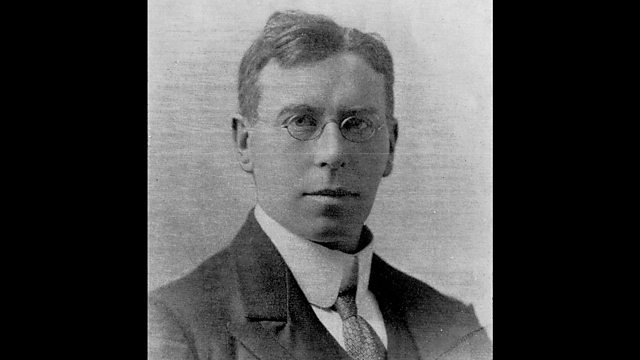Aberdeen, Scotland: Surgery Transformed – Sir Henry Gray
The story of surgeon, Sir Henry Gray and how two crucial advances he made in battlefield surgery helped save hundreds, if not thousands, of lives.
Aberdeen surgeon, Sir Henry Gray successfully tackled one of the greatest killers of the war - compound fractures of the thighbone. His discoveries allowed many young soldiers a chance to survive and come back for further treatment to orthopaedic centres like the one at Woodend Hospital in Aberdeen. Retired surgeon Thomas Scotland has been examining Sir Henry’s remarkable contribution.
You wouldn’t think a broken bone could end a young healthy person’s life - but in WW1 thigh-bones, smashed by shell fragments were a major killer. The broken bones weren’t just serious in themselves, the wound lay open to filth and disease. It was one of the most common injuries on the western front - and in 1914-15 it was 80 per cent fatal. Young lives were being needlessly lost all the time to it. The biggest problem was antiquated rifle-splints used on the legs - which meant that the bone ends weren’t immobilised - they moved in the wound causing agony, blood loss and further damage as the casualty was taken down the line. Soldiers arrived at casualty clearing stations in shock, bleeding to death, and in no fit state for surgery.
Sir Henry saw that there were two key ways to stop this killer: firstly he introduced the new Thomas splint - which successfully held the bones in place, giving casualties a fighting chance of making it to surgery. The second was wound excision - radical surgery early on to clear out all the dead flesh and filth from the wound to stop infection. This was absolutely vital because the well-manured fields of Flanders harboured the deadly organism that caused gas gangrene - and it easily made its way into these big open wounds in the thigh. Through these two innovations, Sir Henry not only cut the fatality rate to only 15%, but also greatly dropped the number of amputations. When you think that he saw 1009 of these wounds in the battle of Arras alone, you start to realise how many lives he saved. His great niece Ann Boyer who reads from one of his letters to family, is very proud of him and very moved by his life at the front.
Duration:
This clip is from
Featured in...
![]()
Βι¶ΉΤΌΕΔ Radio Scotland—World War One At Βι¶ΉΤΌΕΔ
Places in Scotland that tell a story of World War One
![]()
Medicine—World War One At Βι¶ΉΤΌΕΔ
Hospitals, medical pioneers and the nursing contribution
More clips from World War One At Βι¶ΉΤΌΕΔ
-
![]()
The loss of HMY Iolaire
Duration: 18:52
-
![]()
Scotland, Slamannan and the Argylls
Duration: 07:55
-
![]()
Scotland Museum of Edinburgh mourning dress
Duration: 06:17
-
![]()
Scotland Montrose 'GI Brides'
Duration: 06:41







